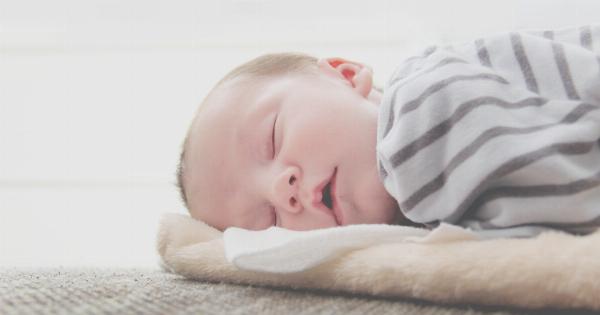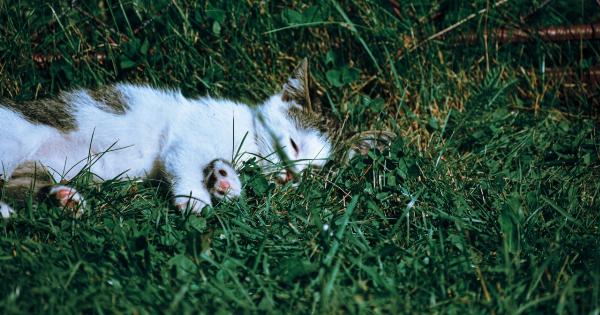Sleep is essential for children’s growth and development. Adequate sleep is necessary for children to maintain their physical and mental health, ensuring they are well-rested.
Lack of sleep can affect developmental milestones, learning, and behavior. In this article, we will discuss sleep needs in childhood and the impact of sleep on a child’s overall well-being.
How Much Sleep Do Children Need?
The amount of sleep children need varies depending on their age. The American Academy of Pediatrics recommends the following sleep guidelines:.
- Infants (4-12 months): 12-16 hours of sleep per day, including naps.
- Toddlers (1-2 years): 11-14 hours of sleep per day, including naps.
- Preschoolers (3-5 years): 10-13 hours of sleep per day, including naps.
- School-age children (6-12 years): 9-12 hours of sleep per day.
- Adolescents (13-18 years): 8-10 hours of sleep per day.
Why Is Enough Sleep So Important?
Sleep is critical for brain development and helps children consolidate memories and learn. Getting enough sleep helps children with their emotional regulation and reduces the risk of developing mental health problems.
Adequate sleep is also important for physical health, boosting the immune system, promoting growth and development, and reducing the risk of obesity and type 2 diabetes.
Common Sleep Problems in Childhood
Sleep problems are common in children of all ages. Some of the most common sleep problems in childhood include:.
Bedtime Resistance
Kids often resist going to bed. They may be afraid of the dark or experiencing separation anxiety. Hunger or thirst may also be a reason for resisting bedtime. Establishing a regular bedtime routine can help overcome this sleep problem.
Nightmares
Nightmares are vivid and disturbing dreams that wake kids up. They are normal and can happen at any age. Fear, anxiety, and stress can be contributing factors.
To help your child cope with nightmares, try to create a relaxing bedtime ritual and provide reassurance and comfort when your child wakes up from a nightmare.
Sleepwalking and Night Terrors
Both sleepwalking and night terrors are more common in young children. They occur during non-REM sleep, and kids are usually unaware of their behavior during the episodes. In most cases, the child will outgrow sleepwalking and night terrors.
Sleep Apnea
Sleep apnea is a sleep disorder that affects the way children breathe at night. Obstructive sleep apnea happens when the airway is blocked during sleep, causing snoring and breathing pauses.
Symptoms can include restlessness, snoring, and difficulty waking up in the morning. It’s essential to seek medical attention if you suspect your child has sleep apnea.
How to Promote Healthy Sleep Habits in Children
Promoting healthy sleep habits is essential for children’s well-being. Here are some tips to help your child establish healthy sleep habits:.
Stick to a Sleep Schedule
Establishing and following a regular sleep routine can help your child maintain a healthy sleep schedule. Try to keep a consistent sleep schedule, including weekends and holidays.
Create a Relaxing Bedtime Routine
A relaxing bedtime routine can help signal to your child that it’s time to sleep. Incorporate calming activities such as reading a book or taking a bath into the bedtime routine.
Avoid Stimulants
Avoid stimulants such as caffeine and sugar close to bedtime, as they can interfere with sleep. Be mindful of hidden sources of caffeine, such as chocolate and some medications.
Create a Sleep-Conducive Environment
A quiet, dark, and cool environment can promote sleep. Try to create a sleep-conducive environment by reducing noise, using blackout curtains, and keeping the room at a comfortable temperature.
Avoid Screen Time Before Bed
Avoid screen time, including TV and electronic devices, before bedtime. The blue light from screens can interfere with sleep.
Encourage Physical Activity
Physical activity during the day can help promote sleep at night. Encourage your child to be active during the day, but avoid strenuous activities close to bedtime.
Model Healthy Sleep Habits
Model healthy sleep habits by following a regular sleep routine and prioritizing sleep in your own life. Your child is more likely to prioritize sleep if they see you doing the same.
Conclusion
Adequate sleep is essential for children’s growth and development. The amount of sleep needed varies depending on the child’s age. Sleep problems are common in childhood, but establishing healthy sleep habits can promote better sleep.
Parents can promote healthy sleep habits in children by creating a sleep-conducive environment, sticking to a sleep schedule, and encouraging physical activity during the day.


























